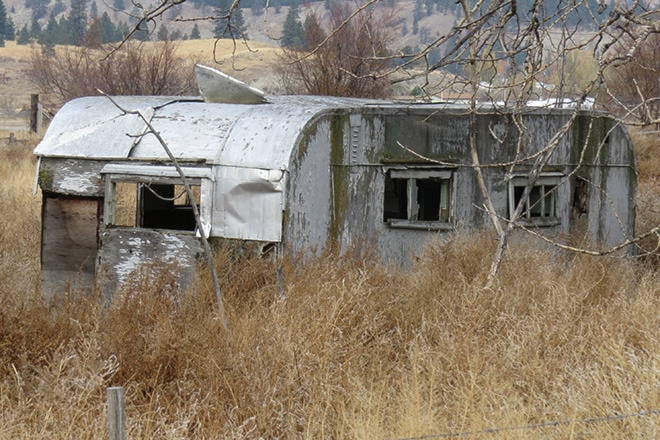I own a recreational vehicle (a fifth wheel trailer) that still has considerable life left in it even though it is a 1999 model.
And, to be honest, I‘ve never given much thought to what happens to end-of-life (EOL) RVs. I suspect a great many other RV owners have also not given much thought to what will happen when their RV is at EOL.
Related: Abandoned RVs plague Okanagan backcountry
This is actually becoming a huge problem here in B.C. and elsewhere. RVs have been around since at least the 1930s and have become increasingly popular over the past 60 years. Since 2000, the U.S. has averaged about 300,000 new RVs sold per year with 2016 being almost 400,000 and 2017 on track to exceed that. In the period from 1978 to 1988 approximately 2.4 million RVs were built in the U.S. Those RVs are now at least 30 years old and rapidly approaching EOL, if they haven’t already done so. Canadian numbers are harder to come by and obviously are much smaller, but the number is still significant. Unlike old autos which, because they are made mostly of steel, are relatively easy to recycle, RVs contain an incredible mix of materials, many of which are potentially hazardous and consequently are difficult and expensive to recycle.
Abandoned RVs are a significant problem — both environmentally and socially. Portland, Ore. has such a large number of abandoned RVs that the towing companies the city contracts with are running out of room to store them. The same is true in Penticton, although the actual numbers are much smaller than for Portland. I’ve heard from reliable sources that junked RVs are often just pushed over a cliff in the areas surrounding Penticton and considerable work and expense is entailed in recovering those vehicles.
So what should we do? It appears B.C. has not even really considered the issue when it comes to RVs. Owners can take their EOL RV to the Campbell Mountain landfill but there is a big catch to this solution – the RV must be totally dismantled, sorted into the various materials and the body cut up! Obviously this doesn’t happen very often.
Up until about the mid 1980s RV bodies were mostly made of aluminum which is fairly easy to recycle (think soda and beer cans) but since then fiberglass is the preferred body material. Unfortunately, fiberglass is not easily recyclable. I wrote to two Canadian RV manufacturers’ organizations seeking comment on the problem of disposing of old RVs but neither replied.
Society has decided that the disposal of many other materials which are hazardous to the environment when not recycled should be paid for by the people who use them. Hence we have recycling or disposal fees on a huge number of items that are used every day – think TV sets, computers, batteries, automobile tires, electric hand tools, every electric household appliance, household paint, light bulbs, etc. Purchase any of these items and look at your sales receipt – invariably you will see a separate fee labeled either recycling fee or environmental disposal fee. In the case of many plastic drink containers, the disposal fee is in addition to the bottle deposit which is refundable if you return the bottle for recycling. The disposal fee is not refundable.
So, if it makes sense to charge a recycling fee on things which can be recycled, does it not make sense to charge such a fee on things which are much more difficult to recycle? How about tacking on a $500 or $1,000 disposal fee on every RV sold in the province? On a new RV costing $20,000 (the less expensive end of RVs) $750 would still be less, percentage wise, than the $5 you pay on a $125 tire. Note that eco-fees do not go to the government; they go directly to industry sponsored recycling programs.
The South Okanagan Naturalists’ Club meets monthly on the fourth Thursday of the month. If you would like to learn about our club or our monthly speakers you can check us at www.southokanagannature.com.
Bob Handfield is president of the South Okanagan Naturalists’ Club but the views expressed here are his own and not necessarily those of the club.
